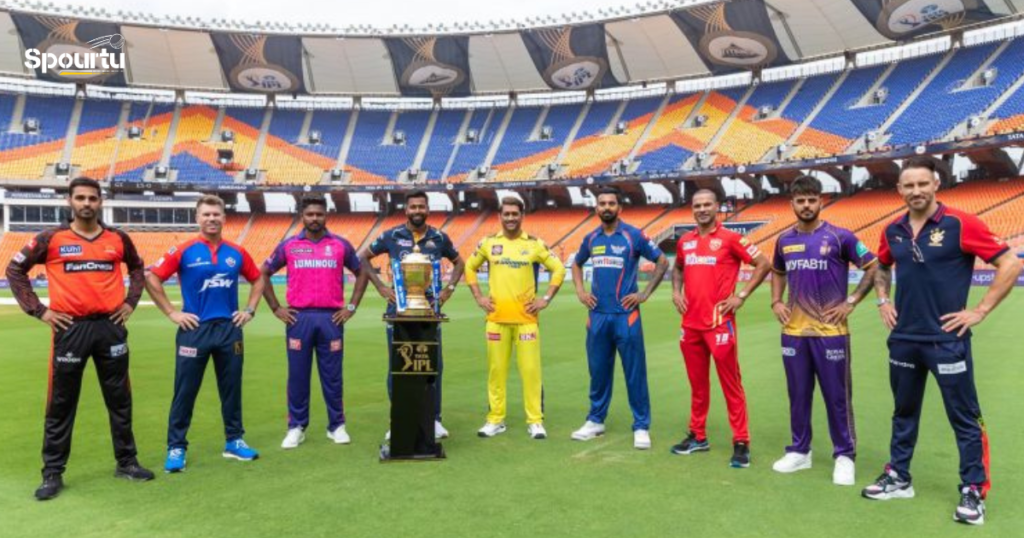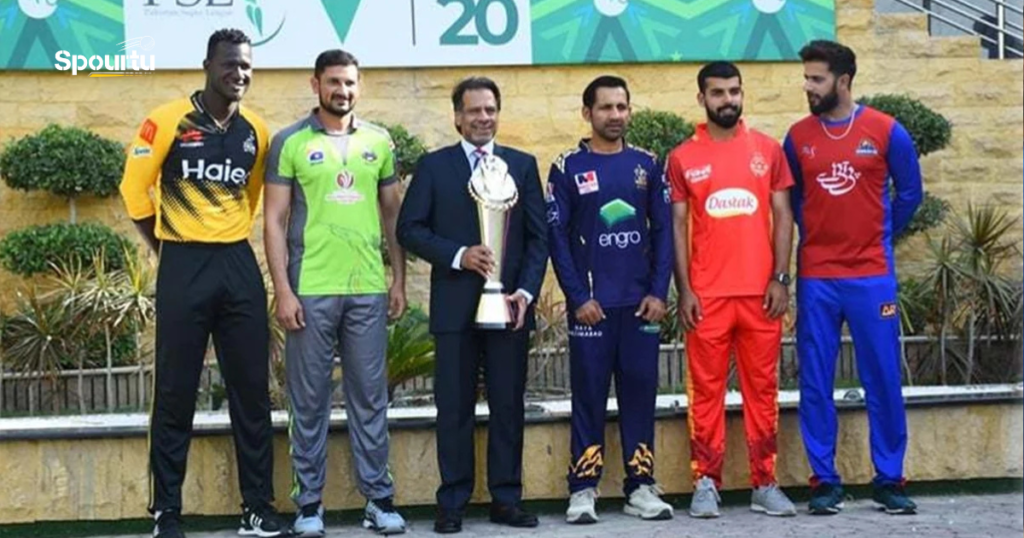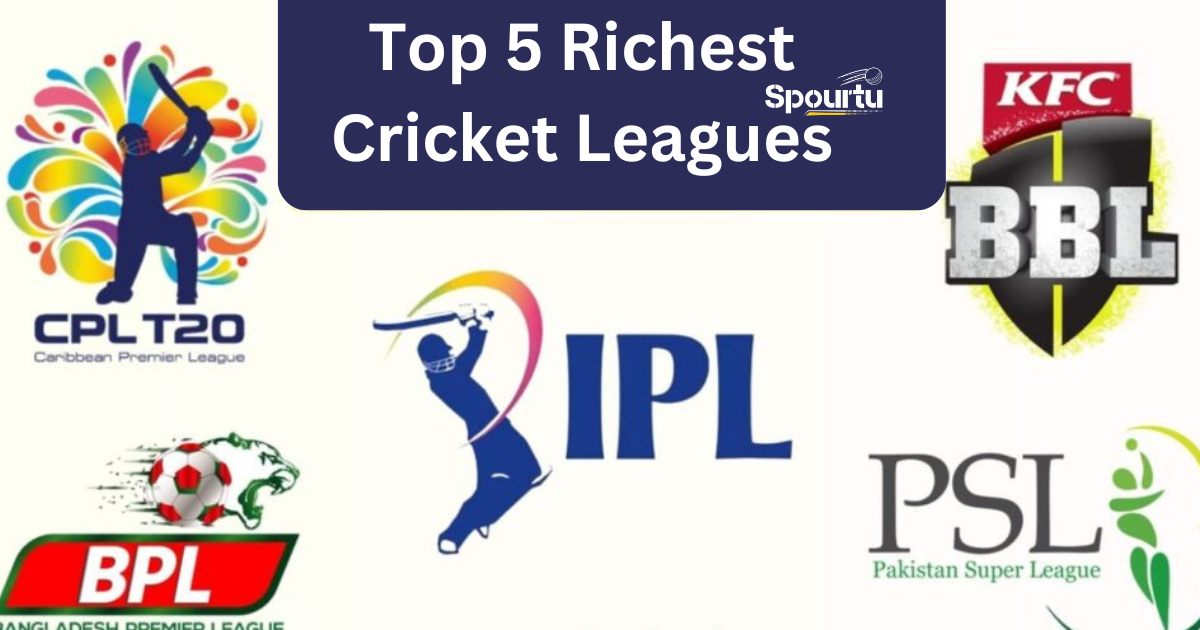Richest Cricket Leagues is not just a game; it’s a massive business. Over the years, T20 leagues have revolutionized the sport, turning it into a multi-billion-dollar industry. Investors, sponsors, and broadcasters pump in huge amounts of money, making these leagues some of the most lucrative sporting events globally. But which cricket leagues lead the financial race? And who are the key investors backing them?
What Is T20 Cricket and Why Are T20 Leagues Popular?
2020 cricket (also referred to as T20) is a whole new ball game compared to one-day internationals and the longest format of the sport, Test cricket. This short and fast-paced format is typically completed in around three hours. With each innings limited to 20 overs, a T20 game is a boundary fest, as batters look to step on the gas and take the bowlers to the cleaners.
The shifts in momentum during matches in top cricket leagues make it an exciting experience for enthusiasts, with the fast and furious action appealing to a broader audience. The T20 format has brought in new nations into the sport, the two most recent examples being those of the European Cricket League and Major League Cricket in the United States.
Indian Premier League (IPL)
- Total Valuation (2024): Over $11 billion (as per Brand Finance report)
- Broadcast Rights (2023-27): $6.2 billion (sold to Disney Star and Viacom18)
- Sponsorship Revenue (2023): Approximately $450 million
Who Invests?
Richest Cricket Leagues IPL franchises are owned by a mix of business tycoons, Bollywood celebrities, and multinational corporations. Some of the biggest investors include:
- Mumbai Indians (Reliance Industries – Mukesh Ambani)
- Chennai Super Kings (India Cements – N. Srinivasan)
- Kolkata Knight Riders (Shah Rukh Khan & Juhi Chawla’s Red Chillies Entertainment)
- Royal Challengers Bangalore (United Spirits – Diageo Group)
Why is IPL So Rich?
- Massive fan base: India’s cricket craze ensures high stadium attendance and TV viewership.
- Lucrative sponsorships: Brands pay top dollar to associate with IPL.
- High-value broadcasting rights: TV and digital streaming platforms compete aggressively.
- Franchise model: Owners earn from ticket sales, merchandise, and sponsorship deals.

Major League Cricket (MLC) – USA
Investment & Valuation:
- Total Investment (2023): Over $120 million
- Franchise Fees: Each team was sold for $30 million
- Sponsorship Deals: Big tech and American companies investing heavily
Who Invests?
Richest Cricket Leagues MLC has attracted major investors, including:https://www.majorleaguecricket.com/
- Microsoft CEO Satya Nadella (Seattle Orcas)
- Vijay Srinivasan (Willow TV founder)
- Shah Rukh Khan’s Knight Riders Group (Los Angeles Knight Riders)
- San Francisco Unicorns (Backed by Silicon Valley Entrepreneurs)
Why is MLC Gaining Financial Momentum?
Corporate sponsorship appeal: American businesses are seeing cricket as a global expansion opportunity.
Targeting the untapped US market: Cricket is growing fast in the USA.
Backed by IPL franchise owners: Investors from IPL are bringing experience and capital.icc events

Pakistan Super League (PSL) Richest Cricket Leagues
- Total Valuation (2024): Around $1 billion
- Broadcast Rights (2022-25): $36 million
- Franchise Fees: Around $20 million per team
Who Invests?
Richest Cricket Leagues PSL has strong backing from Pakistani business tycoons and international investors:
- Peshawar Zalmi (Javed Afridi – CEO of Haier Pakistan)
- Lahore Qalandars (Fawad Rana – QALCO Group, Qatar)
- Islamabad United (Ali Naqvi – Leonine Global Sports)
Why is PSL Financially Strong?
Foreign player participation: International stars attract more viewership, leading to higher ad revenues.
Huge diaspora viewership: The Pakistani community worldwide follows PSL actively.
Strong brand sponsorship: Major brands like HBL (Habib Bank Limited) continue to sponsor PSL.

The Hundred (England)
Investment & Valuation:
- Total Investment by ECB: $250 million (initial funding)
- Annual Revenue Projection: $50-60 million
- Sponsorship Revenue (2023): $35 million
Who Invests?
Richest Cricket Leagues Unlike IPL or PSL, The Hundred is a centrally managed league, meaning all revenue is distributed among teams by the England and Wales Cricket Board (ECB). Key financial partners include:
- Sky Sports & BBC (Broadcasting Rights)
- KP Snacks (Title Sponsorship)
- Nike (Team Merchandise)
Why is The Hundred Financially Unique?
High-profile marketing: Heavy investment in promotions and fan engagement.
ECB-backed structure: No private owners, reducing financial risk.
Family-friendly format: Targeted towards a younger audience.
The Hundred Cricket is another cricket league introduced by the England and Wales Cricket Board (ECB). This T20 cricket format comes with a twist. There are not only eight Men’s cricket teams participating but also eight Women’s cricket teams from all over England and Wales’ major cities and states.

Big Bash League (BBL) – Australia
Investment & Valuation:
- Total Valuation (2024): Estimated at $500 million
- Broadcast Rights (2024-31): $1.2 billion (Seven Network & Foxtel)
- Annual Revenue: Around $60-70 million
Who Invests?
- Cricket Australia: Owns and controls the league.
- Private Investors: Some teams have partial private investment.
- Major Sponsors: KFC (Title Sponsor), Nike, and Toyota.
Why is BBL a Financial Powerhouse?
Winter cricket window: Less competition from other cricket leagues.
Strong grassroots support: Engages Australian cricket at all levels.
Prime-time TV slots: Ensures high ad revenue.
Final Thoughts: What Drives Cricket League Investments?
Each of these leagues has a different investment model, but some common themes drive their financial success:
- Broadcast Deals: The largest revenue source.
- Corporate Sponsorships: Big brands see value in cricket’s global reach.
- Franchise Ownership: Ensures continuous funding and brand value.
- International Player Participation: Attracts viewership and raises the league’s credibility.
Richest Cricket Leagues While IPL remains the undisputed king in terms of financial dominance, other leagues like MLC, PSL, The Hundred, and BBL are making their mark. The future of cricket leagues looks promising as more investors see them as profitable business opportunities rather than just sporting events.
Conclusion
The global cricket landscape is rapidly evolving, with franchise leagues driving financial growth and expanding the sport’s reach. While IPL leads the market, emerging leagues like MLC and established ones like PSL, BBL, and The Hundred are strengthening their presence. Each league brings unique investment strategies, sponsorship models, and audience engagement tactics. The competition will only intensify, and investors will continue to see cricket as a high-revenue venture. As cricket becomes more commercialized, it will be fascinating to see which league rises to challenge IPL’s dominance. The billion-dollar question remains—who will be the next cricketing powerhouse?
Table of Contents



